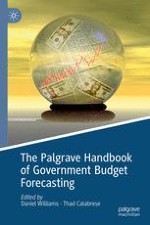2019 | OriginalPaper | Chapter
15. School District Enrollment Projections and Budget Forecasting
Authors : Peter Jones, Cole Rakow, Vincent Reitano
Published in: The Palgrave Handbook of Government Budget Forecasting
Publisher: Springer International Publishing
Activate our intelligent search to find suitable subject content or patents.
Select sections of text to find matching patents with Artificial Intelligence. powered by
Select sections of text to find additional relevant content using AI-assisted search. powered by
